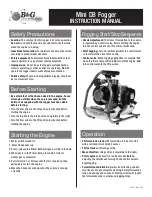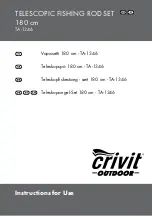
Chapter 3 - Trigger System Setting
Trigger determines when the oscilloscope starts to collect data and displays
waveform. Once the trigger is correctly set, it can convert unstable signals into
meaningful waveforms. In the beginning of data acquisition, it collects enough
data to compose the waveform starting at the left of the trigger point, and
continues until the trigger condition is met.
3.1 Trigger System Interpretation
(1)Trigger Source
Trigger Source : a signal to be used to generate a trigger.
Triggers can be obtained from a variety of sources such as input channels
(CH1, CH2), external trigger (EXT), Line AC, alternate trigger, etc.
■
Input channel: Select any one of the analog signal input terminal (CH1,CH2)
on the front panel of the oscilloscope as a trigger signal.
■ External trigger: Select the input Trig EXT from the back of the oscilloscope.
For example, the external clock input can be used on the Trig EXT terminal
as a trigger source. EXT signal trigger level ranges from –3V~ +3V which
can be set.
■ AC Line
:
Power supply signal, used to observe the relationship between
power signals such as lighting equipment and power supply equipment, to
obtain stable synchronization.
■ Alternate trigger: automatically turn on the independent time base after being
selected .
(2) Trigger Mode
This oscilloscope provides three kinds of trigger modes: Auto trigger, Normal
trigger, and Single trigger
■ Auto trigger: When there is no trigger signal, the system automatically runs
and displays data. When the trigger signal is generated, it automatically switch
to trigger scanning and signal synchronization.
2.2 Channel Coupling
Using CH1 as an example, when a signal is connected to CH1 and activated,
press F1 and select channel coupling via the multipurpose knob. You can also
switch to channel coupling by continuously pressing the F1 key. Press the
multipurpose knob to confirm selection.
2.3 Bandwidth Limitation
When bandwidth limitation is open, the bandwidth of the oscilloscope is limited
to about 20MHz, and attenuates any signal above 20MHz. It is commonly used
to reduce the high frequency noise . When the bandwidth limit function is on,
the BW logo will appear in the vertical state identification
2.4 Vertical Sensitivity
The vertical sensitivity is divided into coarse and fine adjustments.
In coarse adjustment, the sensitivity range is from 1mV/div ~ 20V/div, with
1 – 2 – 5 order.
For example: 10mV - >20mV - >50mV - >100mV
In fine adjustment, it is adjusted with 1% of the current amplitude value .
For example
:
10.00mV—>10.10mV—>10.20mV—>10.30mV
Note: div means square of the display area , one div(square) stands for one grid
2.5 Probe
In order to set the attenuation coefficient of the probe, the coefficient needs to
be set up in the channel operation menu. If the probe attenuation coefficient is
10:1, the probe coefficient should then be set to 10X to ensure correct voltage
reading.
The coefficients can be set to 0.001X, 0.01X, 0.1X, 1X, 10X, 100X, and 1000X
with 1 – 2 – 5 order.
2.6 Reverse Phase
When reverse phase is turned on, the waveform flips 180 degrees. A reverse
phase logo will appear in the vertical state identification
UTD2000CEX-II
User Manual
Summary of Contents for UTD2000CEX-II Series
Page 1: ...UTD2000CEX II Series Digital oscilloscope User Manual ...
Page 47: ......














































